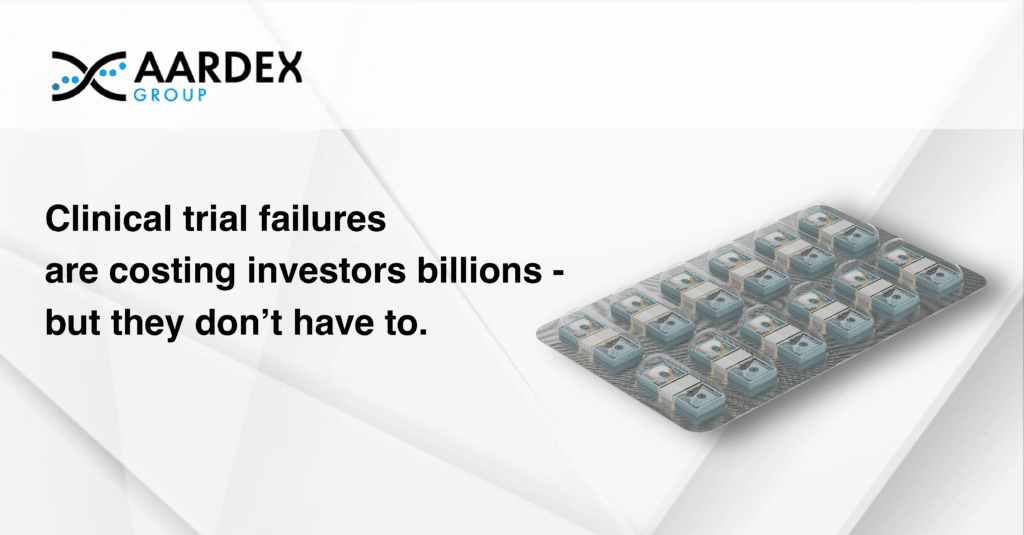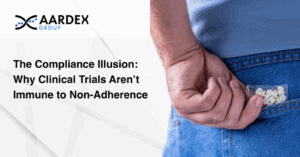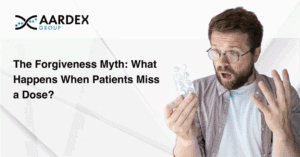When bringing a new drug product to market, powerful motivating forces are involved. And while the potential for enhancing, or even extending, the lives of patients unquestionably takes primacy, there is another inescapably influential factor in the mix: profitability.
For pharmaceutical companies and their investment partners, this objective is underpinned by a fairly unique financial model based on significant upfront outlay in research and development (R&D) eventually being recouped if and when a drug makes it to market.
The Rising Costs and ROI in Drug Development
Analysis from management consultancy Deloitte shows that, after slipping to an all-time low in the wake of the pandemic, the return on investment in R&D in the global pharmaceutical industry rose to 4.1% in 2023. The company said the trend reflected pharma companies’ investment in treatments for weight management and Alzheimer’s disease as well as mRNA vaccines for other infectious diseases.[1] In monetary terms, this ROI figure translates to average peak annual sales of $362 million based on the average development cost of $2.3 billion to take a drug from discovery to launch.
Such returns represent a welcome reward, but it is well known that the majority of promising molecules in the industry’s collective pipeline will never reach the point of approval, meaning significant losses must be absorbed.
Financial Risks in Clinical Trials
Against a backdrop of increasingly complex and costly clinical trials, there will be investors keen to limit their exposure to this risk of failure, particularly when drugs have progressed to the more expensive later stages of the development cycle. This is underlined by analysis of 101 new molecular entities approved by the FDA between 2015 and 2017, which puts the estimated median cost of pivotal trials per approved drug at $48 million.[2] More widely, separate figures suggest the overall price of bringing a new drug to market will be somewhere between $161 million and $2 billion.[3]
This admittedly broad bracket, and the debate that surrounds the numbers within, highlights the difficulty in pinning down definitive figures on clinical trial costs. There is, however, more clarity and consensus on the fact that the investment requires continues to escalate, with some predicting trial expenditure could reach $68.9 billion a year by 2025.[4]
For investors, this trajectory represents an increased level of financial risk, placing greater scrutiny on the factors that can influence cost. At the same time, it amplifies the importance of addressing any factors that have the potential to contribute to avoidable trial failure.
Medication Adherence: A Fundamental Factor in Trial Success
A key example is medication adherence. This critical yet sometimes overlooked function has a fundamental influence on the quality of the data being generated during a trial and, therefore, plays a pivotal role in determining its success. Simply put, it is only possible to assess the effects of a pre-approval drug product if trial co-ordinators are fully confident in the participants’ adherence to the prescribed treatment plan, and this can only be known if robust methods of medication adherence are employed.
By contrast, if the reliability of this data cannot be assured, then conclusions regarding efficacy and safety cannot be fully trusted. Here, then, there is a far higher risk that regulators will demand elements of the trial are repeated or, in a worst-case scenario, that the trial will fail.
The Impact of Poor Adherence on Data Integrity
In later stage trials, these failings are often associated with the process of defining the optimal dose and dosing regimen, balancing maximum efficacy for the patient while keeping toxicity, and therefore negative effects, to a minimum. Dose optimisation is typically a focus of Phase II trials, following the establishment of a safe dosage range in smaller scale (and less costly) Phase I trials. Exposure to a larger trial population elicits the high-value data required to determine the elusive ‘sweet spot’ for an optimal dose.
The Risk of Inaccurate Medication Adherence Monitoring
However, in trials that employ flawed methods of medication adherence monitoring, such as patient self-report, it is entirely possible for adherence to be misrepresented or for instances of non-adherence to be unaccounted for. This, in turn, means that the data supposedly illuminating the dose-exposure-response relationship is also flawed, meaning that the determined dose is not underpinned by robust evidence, possibly exposing patients to unwarranted levels of toxicity. As a result, there is potential for an application to be questioned or denied by regulators who are mindful of the patient risks associated with overdosing.
More fundamentally, it is possible that untracked poor adherence is the root cause underlying either the generation of inconsistent results or the apparent failure of a drug to demonstrate meaningful clinical effect – two factors that have been found to account for half of all failed new drug applications.[5]
The Financial Burden of Trial Failures
Clearly, in cases where poor medication adherence triggers such failures, there is a heavy financial burden to be carried by the individuals, institutions and funds supporting promising new drugs with development capital. It can therefore be regarded as a factor in the loss of billions of dollars in investment and many years of commitment. Indeed, researchers have estimated that in the area of oncology alone, failed trials may be costing as much as $60 billion per year.[6]
Electronic Monitoring: A Solution for Better Adherence
Frustratingly, this is an entirely avoidable problem. Although weaker methods of medication adherence measurement still dominate the clinical trial landscape – often for legacy reasons – far more robust approaches are available. Electronic monitoring, currently used in an estimated 2.7% of trials[7], eliminates the risk of human error by digitally tracking adherence with an accuracy that aligns with bioanalytical measures in 97% of cases. As such, it facilitates a data-rich continuous assessment of drug exposure and enhances the quality of trial analyses.[8]
Challenge of Reducing Avoidable Cost Losses in Drug Development
Of course, faced with increasingly complex clinical trials and persistently unfavourable odds of success, the challenge of taking a new drug to market will maintain inherent risk and financial losses will be unavoidable. But the uncomfortable reality is that where these losses can be traced back to poor medication monitoring and undetected non-adherence, they should be acknowledged less as the inevitable cost of doing business and more as the inexcusable cost of employing flawed methodologies.
[1] https://www.deloitte.com/ch/en/about/press-room/deloitte-pharma-study-r-and-d-returns-are-improving.html
[2] https://pmc.ncbi.nlm.nih.gov/articles/PMC7295430/
[3] https://aspe.hhs.gov/reports/examination-clinical-trial-costs-barriers-drug-development-0
[4] https://www.nature.com/articles/d41591-019-00008-7
[5] https://jamanetwork.com/journals/jama/fullarticle/1817795
[6] https://www.cancertherapyadvisor.com/news/failed-oncology-trials-may-cost-up-to-60-billion-per-year/
[7] Mantila KM, Pasmooij AMG, Hallgreen CE, Mol PGM, van Boven JFM. Medication Adherence Measurement Methods in Registration Trials Supporting the Approval of New Medicines: A Cross-Sectional Analysis of Centralized Procedures in the European Union 2010-2020. Clin Pharmacol Ther. 2022 Nov;112(5):1051-1060. doi: 10.1002/cpt.2709. Epub 2022 Jul 30. PMID: 35816103; PMCID: PMC9795959.
[8] Vrijens B, Urquhart J. Methods for measuring, enhancing, and accounting for medication adherence in clinical trials. Clin Pharmacol Ther. 2014 Jun;95(6):617-26. doi: 10.1038/clpt.2014.59. Epub 2014 Mar 12. PMID: 24739446.l



